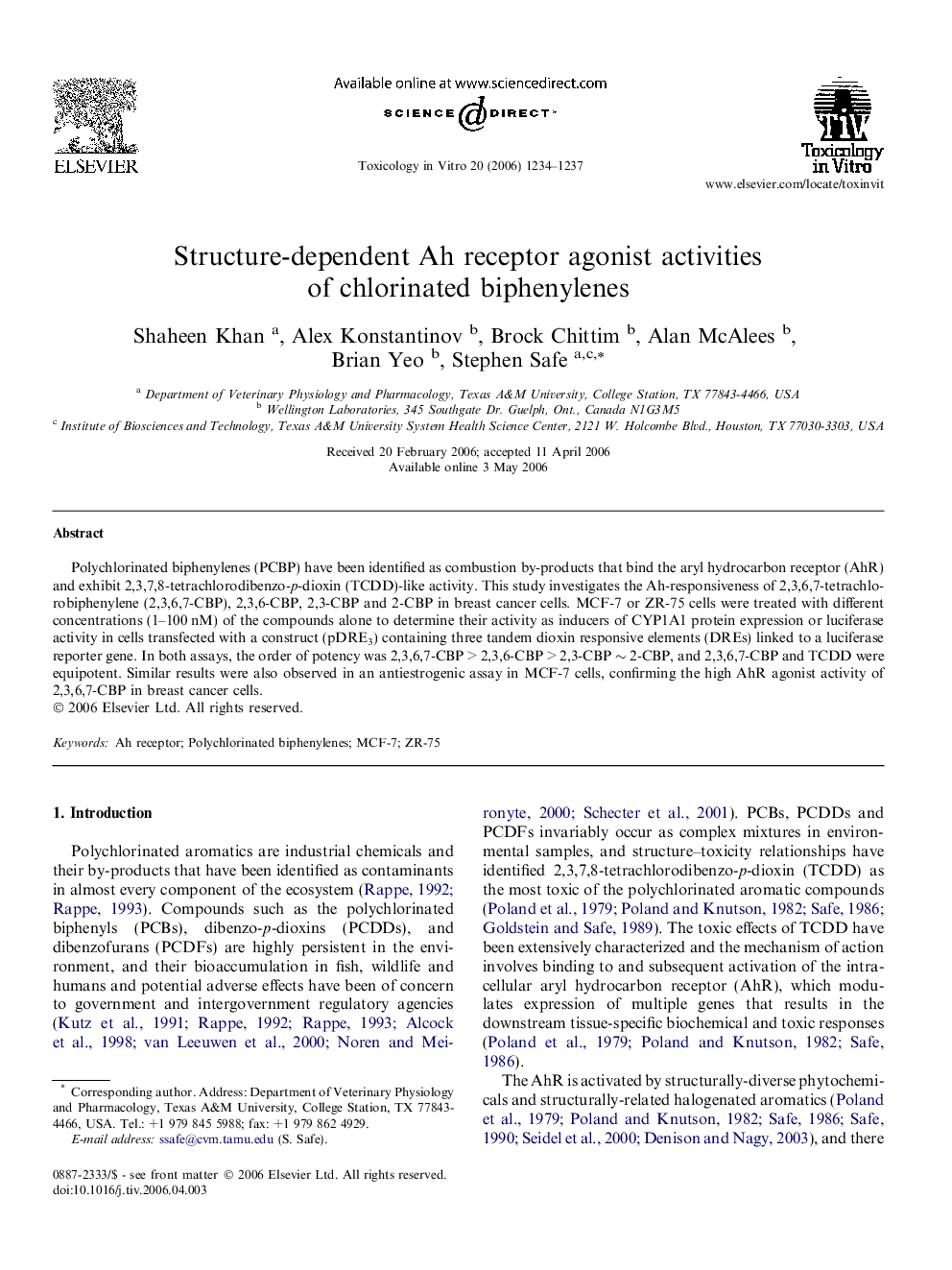| Article ID | Journal | Published Year | Pages | File Type |
|---|---|---|---|---|
| 2603982 | Toxicology in Vitro | 2006 | 4 Pages |
Polychlorinated biphenylenes (PCBP) have been identified as combustion by-products that bind the aryl hydrocarbon receptor (AhR) and exhibit 2,3,7,8-tetrachlorodibenzo-p-dioxin (TCDD)-like activity. This study investigates the Ah-responsiveness of 2,3,6,7-tetrachlorobiphenylene (2,3,6,7-CBP), 2,3,6-CBP, 2,3-CBP and 2-CBP in breast cancer cells. MCF-7 or ZR-75 cells were treated with different concentrations (1–100 nM) of the compounds alone to determine their activity as inducers of CYP1A1 protein expression or luciferase activity in cells transfected with a construct (pDRE3) containing three tandem dioxin responsive elements (DREs) linked to a luciferase reporter gene. In both assays, the order of potency was 2,3,6,7-CBP > 2,3,6-CBP > 2,3-CBP ∼ 2-CBP, and 2,3,6,7-CBP and TCDD were equipotent. Similar results were also observed in an antiestrogenic assay in MCF-7 cells, confirming the high AhR agonist activity of 2,3,6,7-CBP in breast cancer cells.
